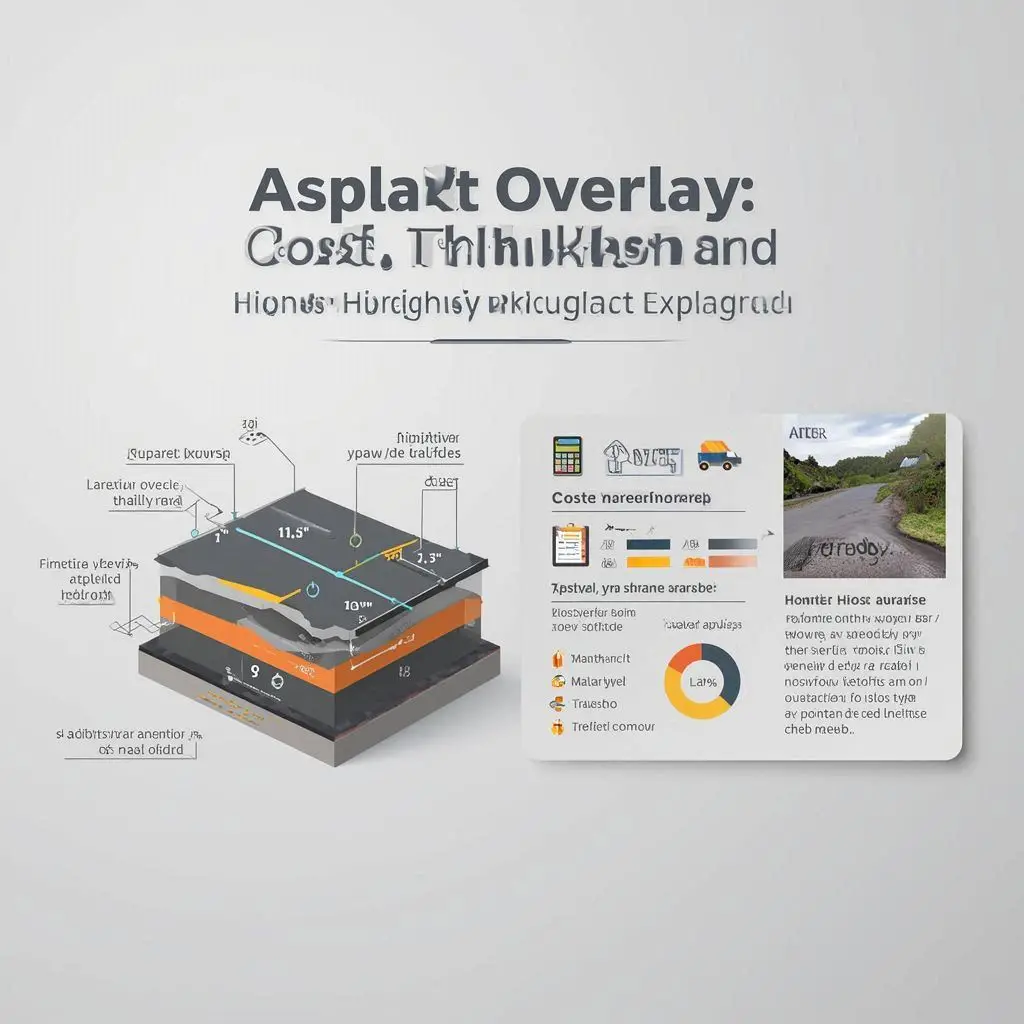
Asphalt Overlay: Cost, Thickness, and Heroes Highway Project Explained
Rejuvenating damaged pavement becomes easier and more affordable with asphalt overlay solutions. Whether you’re a contractor, a government planner, or a homeowner exploring resurfacing options, understanding asphalt overlay costs, thickness, and real-life examples like the Heroes Highway can help you make an informed decision.
Introduction
This essential road maintenance technique adds a new asphalt layer over the current surface to extend road life and improve performance. It provides a smoother finish, improved durability, and renewed structural integrity without the expense of full reconstruction. From highways to parking lots, overlay projects are becoming more common due to their efficiency and cost benefits. This article breaks down what asphalt overlay involves, its associated costs, the thin overlay approach, and a case study of the Heroes Highway overlay project. A special reference is made to bitumen 80/100, a commonly used binder in such applications.
Asphalt Overlay
Summary:
To reinforce old pavement, an asphalt overlay installs a new layer directly over the current surface.
Asphalt overlay is widely used as a pavement preservation method. What sets overlay apart is its ability to reuse the current base layer while renewing the pavement surface above. This makes it both time- and cost-efficient, especially in urban infrastructure maintenance. Typically, an overlay ranges in thickness from 1.5 inches to 3 inches, depending on road condition and expected traffic load.
The key component in asphalt mix used for overlay is bitumen 80/100, which offers excellent adhesion, durability, and flexibility. This grade of bitumen is well-suited for moderate climates and supports both thin and standard overlays.
Overlay is ideal for roads with surface cracking, raveling, or oxidation but where the underlying foundation remains stable. Pre-overlay preparation like crack filling, milling, and cleaning ensures better performance and longevity.
How Much Does Asphalt Overlay Cost
Summary:
Asphalt overlay costs vary based on area size, thickness, and material, but average rates typically range from $3 to $7 per square foot.
To determine asphalt overlay expenses accurately, it's important to account for several contributing factors:
- Thickness of the overlay
- Location and logistics
- Surface preparation needed
- Labor and equipment
- Material specifications, including the bitumen type such as 80/100, are crucial in determining quality
Standard overlay installations cost around $3–$5 per square foot, but milling and surface adjustment can raise costs to $6–$7. Heavy-duty overlays on commercial or highway surfaces are even higher. Using bitumen 80/100 helps balance performance and budget, making it a preferred choice in many large-scale roadwork projects.
Heroes Highway Asphalt Overlay
Summary:
The Heroes Highway project demonstrates effective use of asphalt overlay to restore a high-traffic route with minimal disruption.
The Heroes Highway overlay project is a well-cited example of infrastructure restoration through asphalt overlay. This project involved resurfacing a heavily trafficked memorial route with a thin but durable asphalt layer. The use of bitumen 80/100 allowed for flexibility under varying loads and weather conditions while keeping costs manageable.
Key highlights of the project included:
- Overlay thickness of 1.5 to 2 inches
- Strategic scheduling to avoid peak traffic times
- Enhanced safety markings post-overlay
This case showed how efficient planning and high-quality materials like bitumen 80/100 can result in fast, durable, and respectful infrastructure upgrades on commemorative roadways.
Thin Asphalt Overlay
Summary:
Thin asphalt overlays are economical resurfacing solutions ideal for minor surface distress, using as little as 1 inch of new material.
Thin overlays typically refer to asphalt layers that are less than 1.5 inches thick. They are suitable for roads with light surface damage such as micro-cracking, oxidation, or raveling, but not for structural failures.
Advantages of thin overlays include:
- Lower cost per square foot
- Faster application and curing time
- Reduced material usage
- Improved skid resistance and ride quality
Using bitumen 80/100 in thin overlays ensures a strong bond with the existing surface. The elasticity of the binder allows it to perform well even in thin applications, minimizing risk of delamination or early cracking.
Municipalities often opt for thin overlays as part of preventive maintenance programs to extend road life by 5–7 years with minimal investment.
Asphalt Overlay Vs. Full Reconstruction
Summary:
While overlay is more cost-effective and less invasive, full reconstruction is necessary when the subbase is structurally compromised.
- Asphalt Overlay:
- Uses a new asphalt layer applied over the existing base.
- The cost is lower—typically $3 to $7 per square foot—adjusted according to the level of surface preparation and project location.
- Faster construction time, often completed within 1 to 3 days.
- Suitable for surfaces with minor to moderate surface damage but a stable base.
- Requires less equipment and fewer resources.
- Commonly uses bitumen 80/100 for optimal flexibility and bonding.
- Extends the life of roads without full removal or excavation.
- Full Reconstruction:
- Involves complete removal of the existing asphalt and rebuilding the base layer.
- The expense is greater, with typical costs ranging from $8 to $15 per square foot, and sometimes higher for complex projects.
- Longer project duration, depending on depth, drainage work, and subgrade stabilization.
- Necessary when the pavement foundation is severely damaged or structurally compromised.
- Requires heavier machinery, more materials, and more labor.
- Uses fresh layers of aggregate base and new asphalt, often with upgraded binders.
- Provides a longer lifespan and improved performance, especially for high-traffic areas.
Conclusion
For cost-conscious projects, asphalt overlay provides a reliable way to renew pavement while preserving the existing foundation. It works well for streets, highways, and commemorative roads like the Heroes Highway, particularly when using high-quality materials like bitumen 80/100. With options like thin overlays available, contractors and municipalities can tailor their maintenance strategies to specific needs and budgets. By comparing overlay to full-depth reconstruction, decision-makers can optimize for both longevity and efficiency—extending pavement life and ensuring safety for all users.

